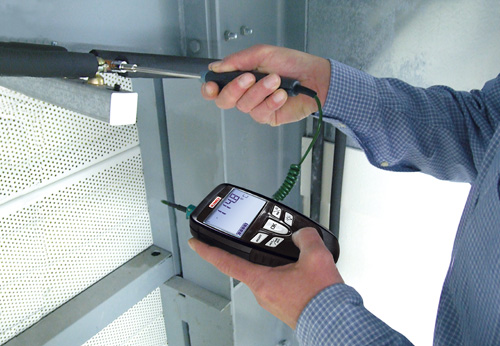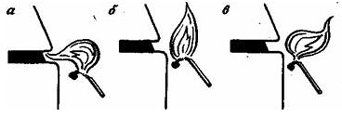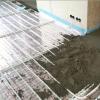If you have a stove or a fireplace in your house, then you are probably familiar with such a word as a chimney.
Most often, when using a chimney, the problem arises of how to check the thrust indicator and how to increase it (it is also worth talking about reverse draft and ways to increase it). However, first things first.
Signs of traction problems:
- Look at the color of the fire - if your fire has a dark reddish color, then you have a small traction force.
- If the rumble of fire and the white color of the flame are heard, the draft is excessive.
- There is a smell of smoke in the room or smoke is coming into the room.
How to check draft in a chimney

In general, there is a special device for this - an anemoment, but it is quite expensive and does it make sense for you to buy it if you use it extremely in a row? This device is used by gas workers to check chimneys in houses and apartments.
To check the traction, you can use improvised means:

- We open the stove door, lower a sheet of paper inside and set it on fire, watching where the smoke goes.
- Take a piece of toilet paper and bring it up to the chimney, you need to watch where the paper will deviate.
- We bring the cigarette to the chimney and monitor the deviation of the smoke.
- The color of the flame is yellow-golden - an indicator of good traction.
 a - there is thrust, b - no thrust, c - reverse thrust
a - there is thrust, b - no thrust, c - reverse thrust
Why is there no draft in the chimney
If the test showed insufficient thrust for combustion, then first you should think about what could have affected this?
Many unknowingly say “no draft” - but this does not mean that it does not exist at all (there can be no draft only when you do not have a chimney itself), it just means that there is no necessary draft force.
Reasons for lack of traction:
- If there is no chimney (it is a vertical pipe of a certain height).
- If the channel is blocked (it may be clogged with soot, a foreign object has entered there, or other debris has partially blocked the channel).
- If there is no temperature difference between the air inside the pipe and the air outside
- Sometimes another process is taken for the absence of draft, which is called “reverse draft” (this is when the air does not go out through the pipe, but, on the contrary, strive through the chimney into the room).
Most often, this is a common chimney blockage, when either a layer of soot or foreign objects interfere with the passage of air flow.

Even during the check, they sometimes lower a metal ball from the roof through the chimney and check for the presence or absence of blockages. With its help, they move stuck objects, so that it is easier to get them later.
How to increase the draft in the chimney
If, after checking, it turned out that you have insufficient traction, then you need to think and start actions to increase traction, so that later you do not freeze in bad weather and in winter.

The simplest increase in traction is to clean the chimney from foreign objects and soot.
Ideally, even at the time of construction, a device is fixed in the chimney pipe that regulates the draft in your chimney. With it, you can maintain the required pressure (increasing or decreasing the traction force).
And its presence significantly reduces the chance of problems with traction.
If the pipe was designed incorrectly (width and length) and because of which you have little draft, then you can try to fix it (if possible) or reattach the chimney.

The height of the chimney depends on the slope of the roof (if it does not meet the requirements, it can be increased), although please note that the higher the edge of the chimney above the roof level, the more difficult it is to interact with the chimney (for example, to clean).
If you want optimal performance for the stove and fireplace, tips are attached to the top of the chimney - outbuildings. They prevent wind and rain from entering the chimney.

To increase the draft, you can also use fans with a built-in electric motor.
Usually they work from the wind and help the smoke go out, but if there is not enough wind flow for normal traction, the engine turns on and increases traction.
Back draft in the chimney

First of all, it is worth understanding what reverse thrust is.
Backdraft is a chimney that does not work properly, i.e. when the smoke returns back into the room instead of going out through the chimney.
There are many reasons for the occurrence of reverse thrust, here are the main ones:
Wrong dimensions:
- Incorrect cross-sectional shape;
- Wrong choice of diameter;
- Incorrect pipe length (usually they make the length a little more than 5 meters).
Deviation from requirements:
- There should be no reduction in diameter in the pipe;
- The outer surface of the chimney must be smooth;
- There is no special outbuilding protecting from wind and rain.
Other reasons:
- Leakproof design;
- There is a blockage in the pipe;
- Wrong material selected;
- Cold air inside the chimney;
- It's warmer outside than inside the house.
As you can see from this list, there are many reasons, ranging from errors in the design of the pipe itself to adverse weather conditions.
Although such an effect as reverse thrust is short-term in nature, it still has a very detrimental effect on health, a person may simply not pay attention to a sudden onset of a headache, drowsiness, lie down to sleep and inhale combustion products ...
How to reduce back draft in a chimney
Before rushing to fight back thrust, you need to sit down and think about why it appears, and outline a number of reasons that need to be eliminated to reduce reverse thrust.
A good way to get rid of back draft is to use an electric fan that will suck air (and smoke) and pipes out.

Also, do not forget about the gate (metal damper), usually there are two of them in the chimney, one below, above the stove, the second is in the channel itself.
By modeling different positions of the gates, you can find the optimal one that will solve the problem of traction.
Sometimes the reverse draft is temporary, at the beginning of the season, when there is cold air in the pipe and it needs to be preheated (you can just burn a couple of sheets of paper and warm air will appear).

Draft is an integral part of using fireplaces and stoves, however, you need to "keep the draft in check" by balancing between under and over draft.
In this article, you have learned about the main causes of traction problems (and reverse traction) and how to solve them.


